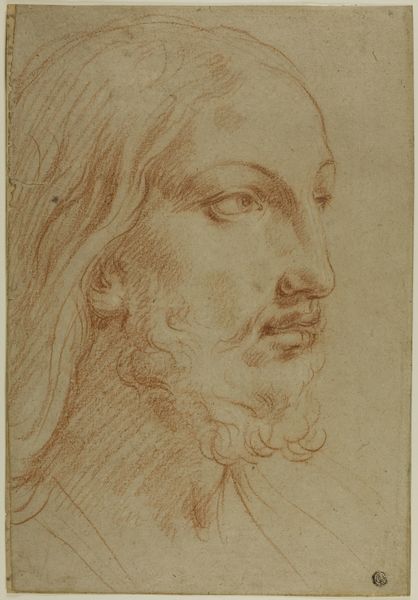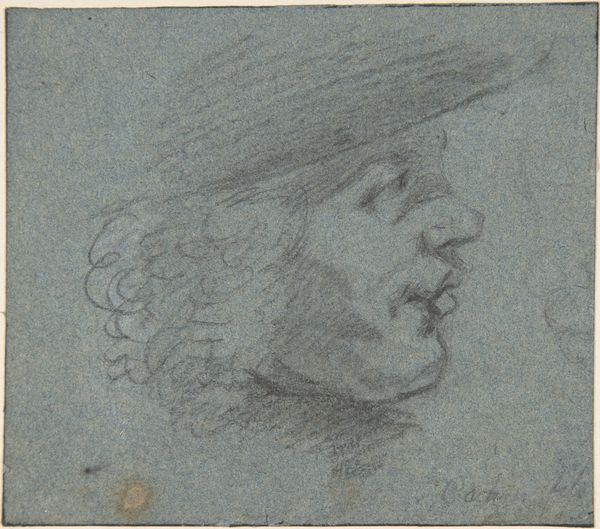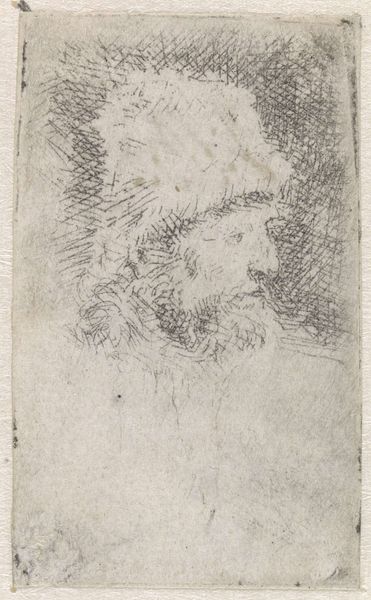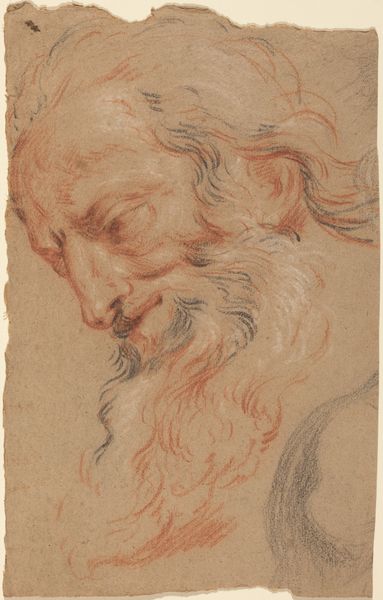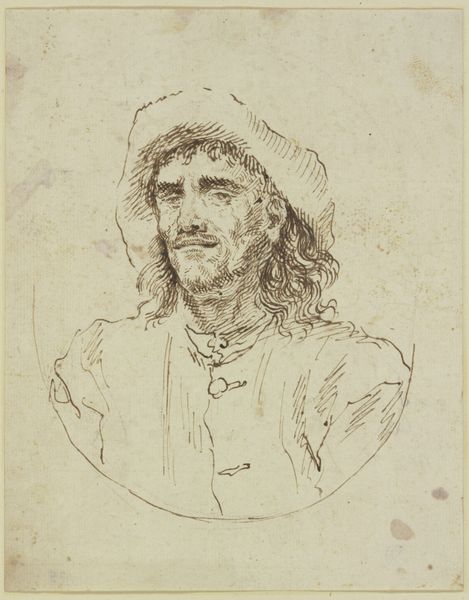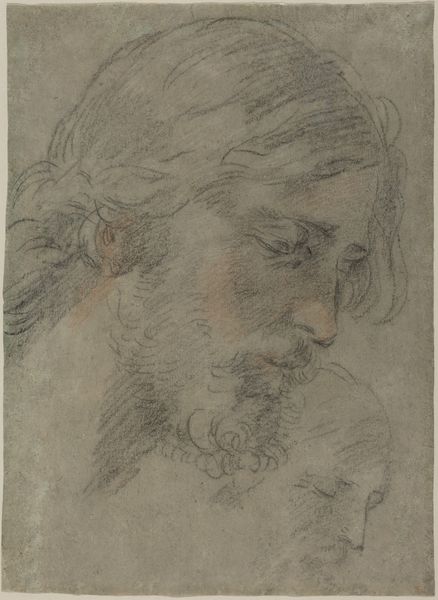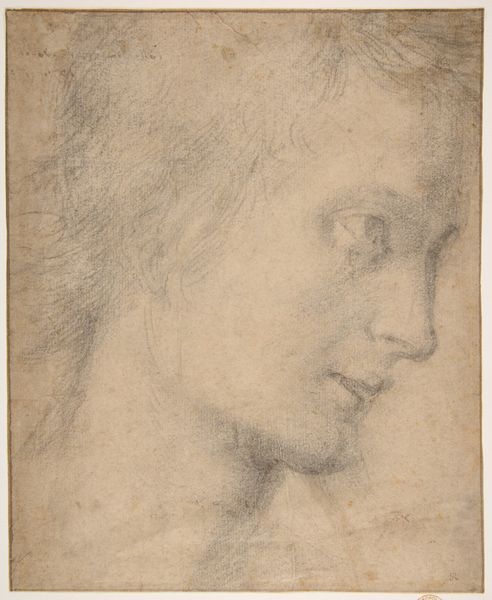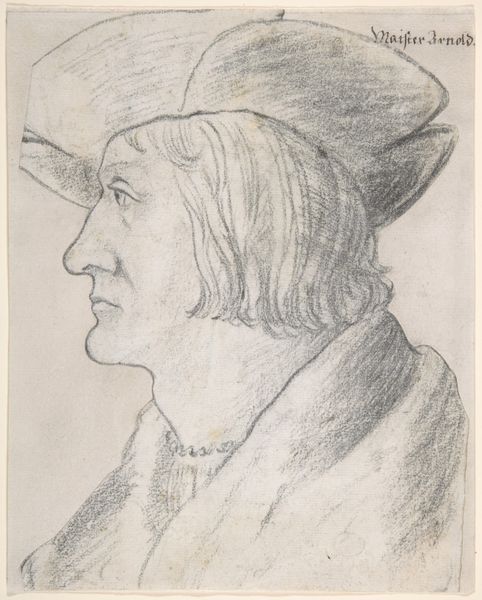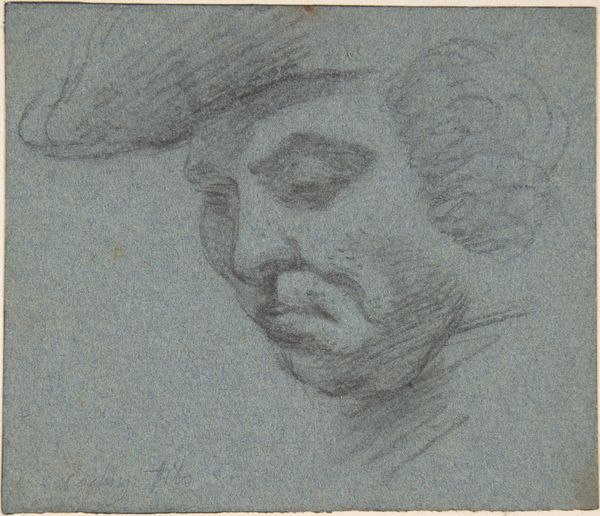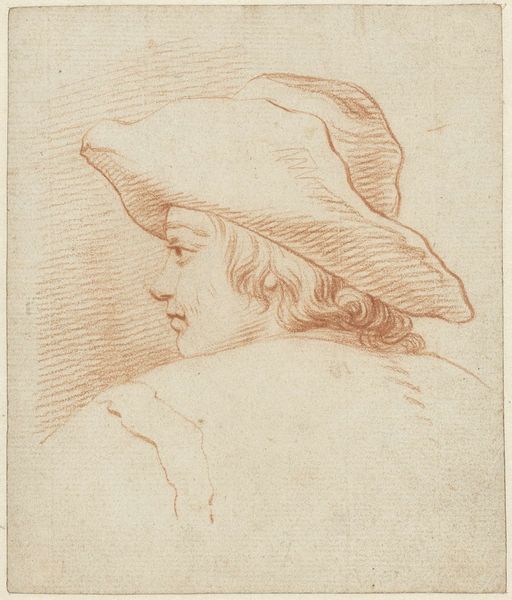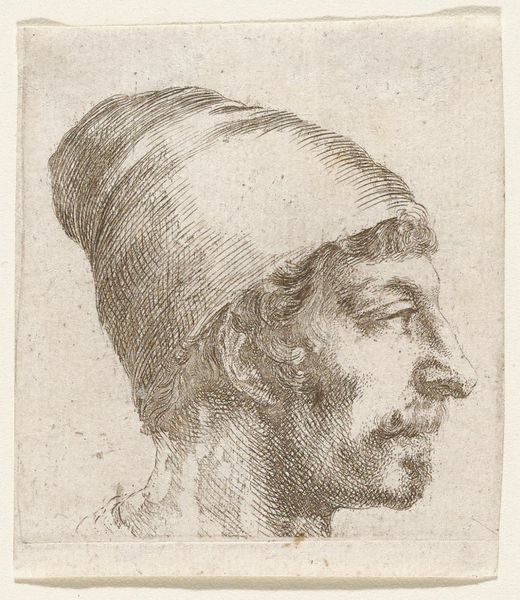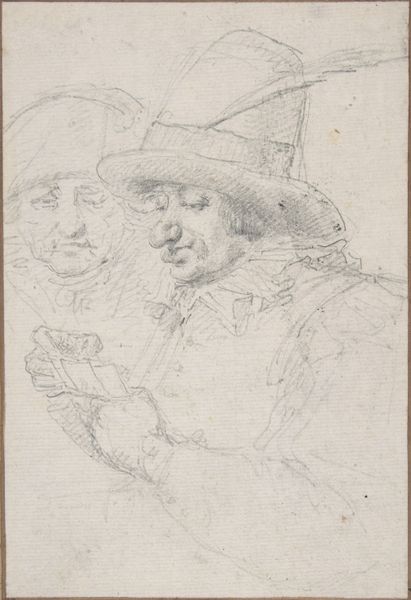
drawing, print, pencil, pen
#
portrait
#
drawing
# print
#
pencil sketch
#
charcoal drawing
#
mannerism
#
pencil drawing
#
pencil
#
pen
#
italian-renaissance
Dimensions: 11 15/16 x 7 13/16in. (30.4 x 19.9cm)
Copyright: Public Domain
Curator: We are standing before Antonio d’Enrico Tanzio’s “Head of a Man,” a striking drawing rendered in pencil and pen sometime between 1575 and 1633. You'll find it here at the Metropolitan Museum of Art. Editor: It's immediately striking! The sienna ink lends the entire sketch a warmth that is very human. He looks… contemplative, perhaps burdened. There’s something unresolved about his gaze. Curator: Precisely. What we're viewing here is a prime example of the portrait style common during the Italian Renaissance, steeped in Mannerist sensibilities. Its creation was most likely connected to printmaking activities. Prints played an essential role in spreading ideas and styles throughout Europe. Editor: You can feel the influence in the flowing lines, even a theatricality— almost performative in the sketch's dynamism. The unfinished head at the top adds an additional layer of intensity. How do you interpret that unfinished head? Curator: Its intentional ambiguity forces a deeper inspection, a questioning of conventional modes of seeing. Who is this man and why are we looking at him in such detail? These drawings, and ultimately prints, amplified the image, thereby extending reach. The creation of these works speaks volumes to the burgeoning merchant class as new markets for art objects and the cultural values promoted and enforced within the Italian Renaissance began to take shape. Editor: That focus on seeing, on observation, feels connected to power. These portraits often codified hierarchies of status and virtue. I’m drawn to the very texture of the drawing; the delicate yet certain strokes. I imagine the artist's hand moving across the page, defining and redefining his subject. What’s more, there are pentimenti throughout the study offering an insight to the creative practice of the artist! Curator: These materials would have had significant trade value. And artistic skill reflected status that artists also vied to obtain during the period, making artistic identity ever important to secure prestigious commissions or entry into courtly or aristocratic life. Editor: Yes, Tanzio, although celebrated now, he also struggled for recognition. What a reminder that artistic genius isn't immune to social, economic, and political forces. He worked to leave a lasting impact, in a field saturated with patriarchal expectations. Curator: Looking at the way historical figures struggled allows me to rethink those narratives that elevate individual achievement over all other considerations. Editor: Absolutely. Art is a mirror reflecting not only individual vision, but the very structures of society itself. Thank you for guiding us!
Comments
No comments
Be the first to comment and join the conversation on the ultimate creative platform.
